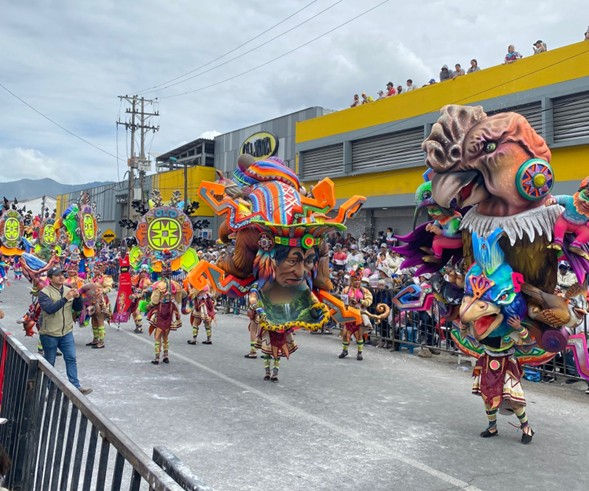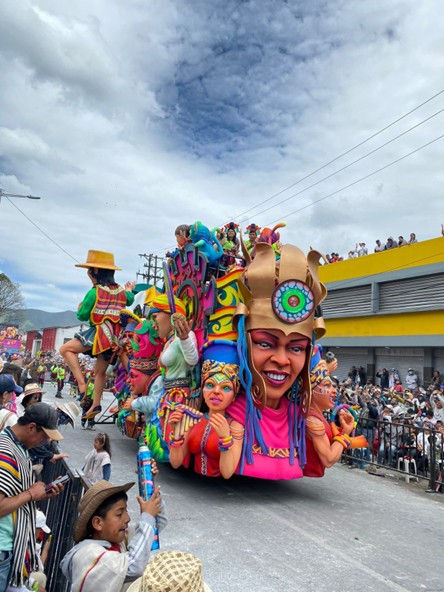The Blacks and Whites’ Carnival of Pasto: An Explosion of Identity, Creativity, and Resistance
- Sofia Ortega

- Sep 9, 2025
- 2 min read

Celebrated in San Juan de Pasto, in the department of Nariño, the Blacks and Whites’ Carnival is one of Colombia’s most unique, special, and colorful events. This festivity is a profound expression of the country’s cultural diversity, where Indigenous, African, and Spanish heritages converge. More than just a carnival, it is a living expression of the Andean, rebellious, and creative spirit of the Pastusos, forged under the gaze of the imposing Galeras volcano.
The origin of this celebration dates back to colonial times, when Black slaves were granted one day of freedom: January 5. On that day, as a symbol of joy and vindication, the Blacks painted the Whites with soot, reversing social roles for a few hours. The following day, January 6, people painted themselves white, thus consolidating a festival where everyone was equal. Over time, this tradition evolved into a symbol of coexistence, inclusion, and the celebration of difference.

The city of Pasto, located in the highlands of Nariño, is a place full of history and resistance. The Indigenous Pastos and Quillacingas, ancestral inhabitants of the territory, resisted the expansion of the Inca Empire long before the arrival of the Spaniards. That indomitable spirit can still be felt in the strength with which the people of Pasto live their carnival. Many attribute their overflowing creativity to the energy of the Galeras volcano, whose fertile lands not only feed the crops but also nourish the artistic soul of its inhabitants.

One of the most striking elements of the carnival are the monumental floats, true mobile works of art with no limits to creativity. These structures, designed by local artists and collectives, combine ancestral techniques with modern materials and represent mythological, social, ecological, or completely imaginary scenes. Their construction can take months and is a testament to the dedication, talent, and passion of a community that lives art as a way of life.
During the carnival, parades, dances, traditional games, and concerts take place, with unique sounds such as La Guaneña or La Bambarabanda, evoking the landscapes of the country’s south. The Blacks and Whites’ Carnival is not just a festivity: it is a cry of identity, a celebration of equality, and a tribute to the history and resistance of a people who have turned their diversity into creative strength.

To close this journey through one of Colombia’s most emblematic festivities, it is worth highlighting some key facts about the Blacks and Whites’ Carnival. This colorful event is held every year between January 2 and 7 in San Juan de Pasto.
Artists, artisans, designers, troupes, and visitors, both national and international, take part in this celebration which, since 2009, has proudly borne the title of Intangible Cultural Heritage of Humanity granted by UNESCO. Without a doubt, the Blacks and Whites’ Carnival is not only an explosion of colors and creativity, but also a living symbol of identity, cultural resistance, and unity among peoples.
Discover this region full of color and let yourself be enchanted by the stories told through its art!
Text and images provided by Stefania Burbano and Sofía Ortega.



Comments